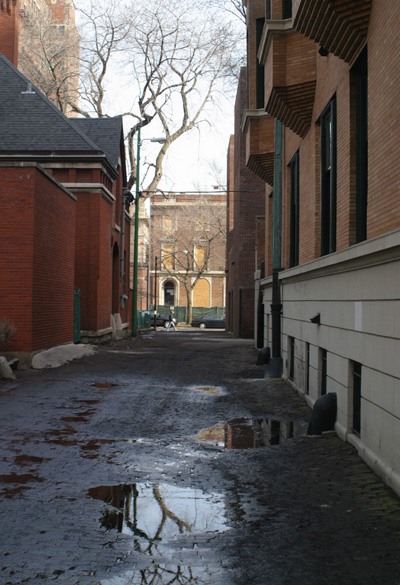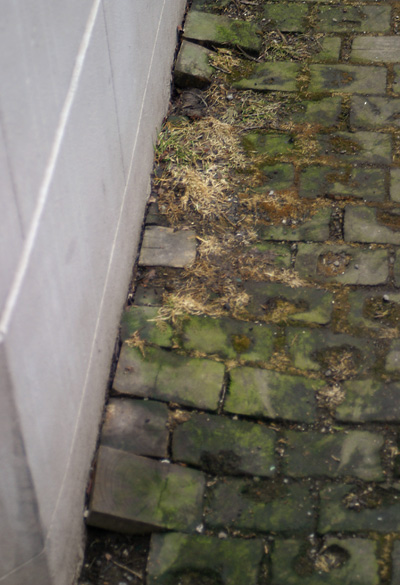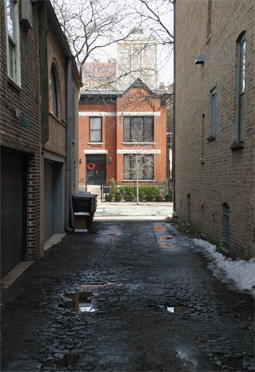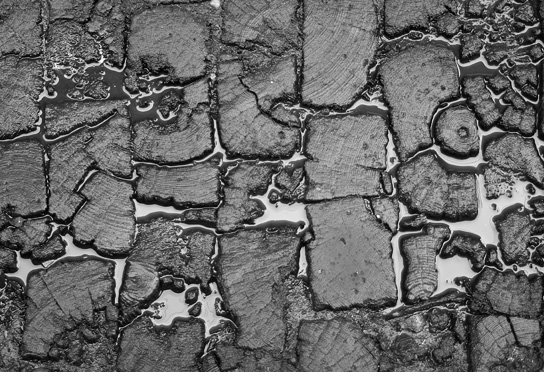Modern day Chicago’s streets and alleys consist primarily of asphalt pavement. Numerous examples in older parts of the city can still be found paved with Belgian block from the late 19th and early 20th century. However, before Belgian block became common, there were many different pavement methods with wildly varying advantages and disadvantages. Because it was so cheap (Chicago had an abundant supply of Wisconsin lumber), wood block was one of the favored early methods. There are no longer any wood block streets, and nearly all of the wood block alleys in the city have been repaved as well. However, at least three examples still exist.


Wood block pavement was more commonly called Nicolson pavement. Samuel Nicolson was the superintendent of Boston and Roxbury Mill Corporation when he invented the process in 1848. He was trying to solve a number of problems related to early paving methods. Nicolson wanted a safe, durable, quiet, clean way to pave the streets used by the Mill Corporation. He achieved most of these objectives, the only problem with his method was durability. The first road lasted seven years before requiring replacement.1
 Nicolson Pavement, 1859.
Nicolson Pavement, 1859.
By 1853, Nicolson had been contracted by the city of Boston to pave a number of streets. His method made it to Chicago in November 1856, when a segment of Wells Street close to the river was paved with white pine blocks. That section wore down half an inch after three years of use.2 Pine tended to wear very quickly, and soon fell out of favor. The favored variety of wood was white oak, until cedar began came to be widely used after the Great Fire. Surprisingly, wood pavement by and large survived the fire, as it was chemically treated and did not burn easily.3


The wooden blocks used for Nicolson pavement were four by five inches wide, and twelve to fifteen inches long. These were laid together loosely on the four inch side. Before laying the blocks, a sand foundation was put down, upon which boards serving as stringers were placed. The blocks are then laid on the boards, and the spaces between the blocks was filled with a mix of gravel and coal tar.4


Chicago’s Civil Engineer in the 1850s, Samuel Greeley, was enthusiastically in favor of Nicolson pavement, writing in an 1859 Tribune article: “Wooden pavement…might have great advantages in a city, where suitable stone was scarce, where lumber was the great staple of the market, and where the foundation was new and yielding.”5 However, wood pavement was not long-lasting on heavily trafficked streets, good for at most a decade. By the 1890s, wood pavement was considered by many to be an anachronistic failure.6 During this period, more durable and cost-efficient pavement methods like Macadam and Stone blocks came into use. Most notably, wood pavement was largely replaced by the Belgian blocks that in some places have lasted to this day.



